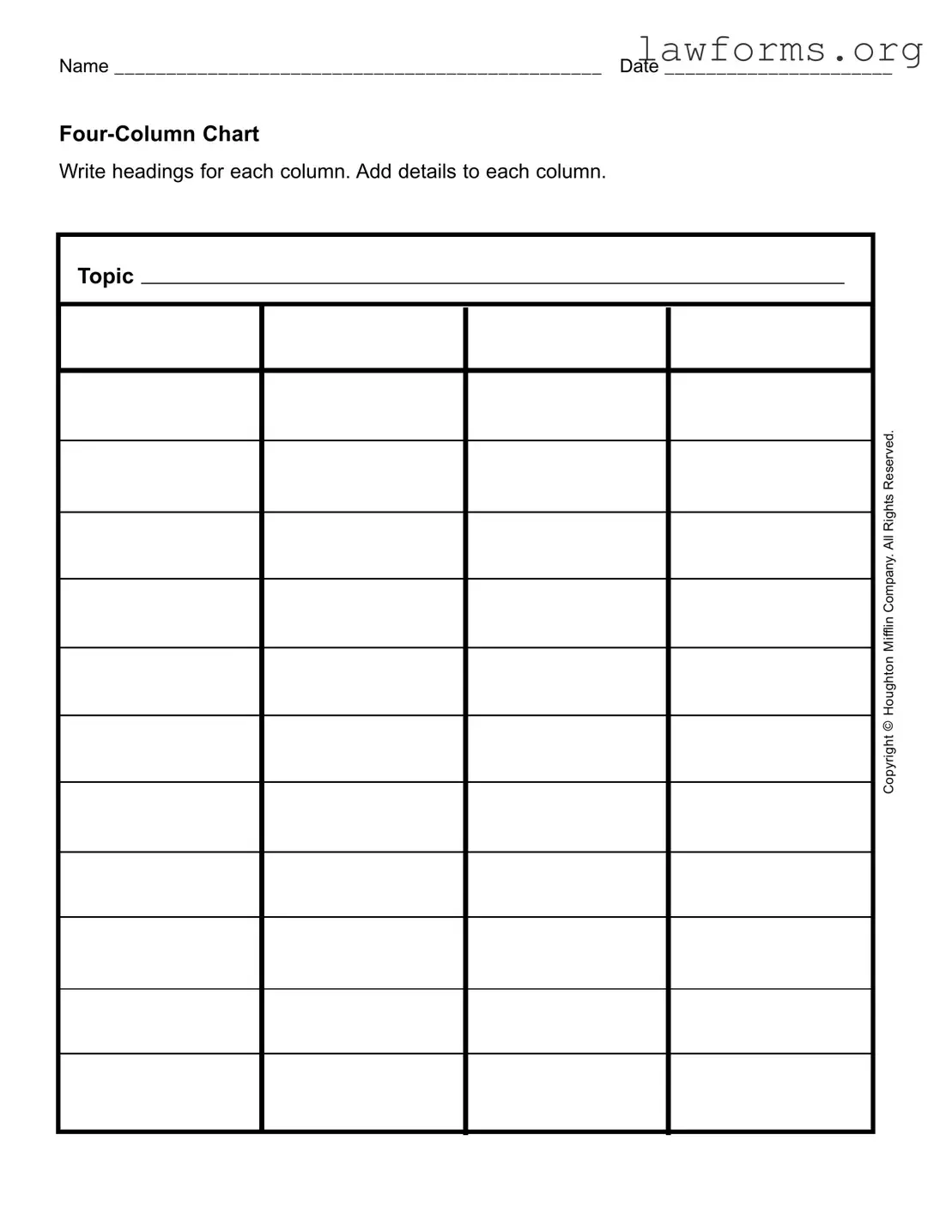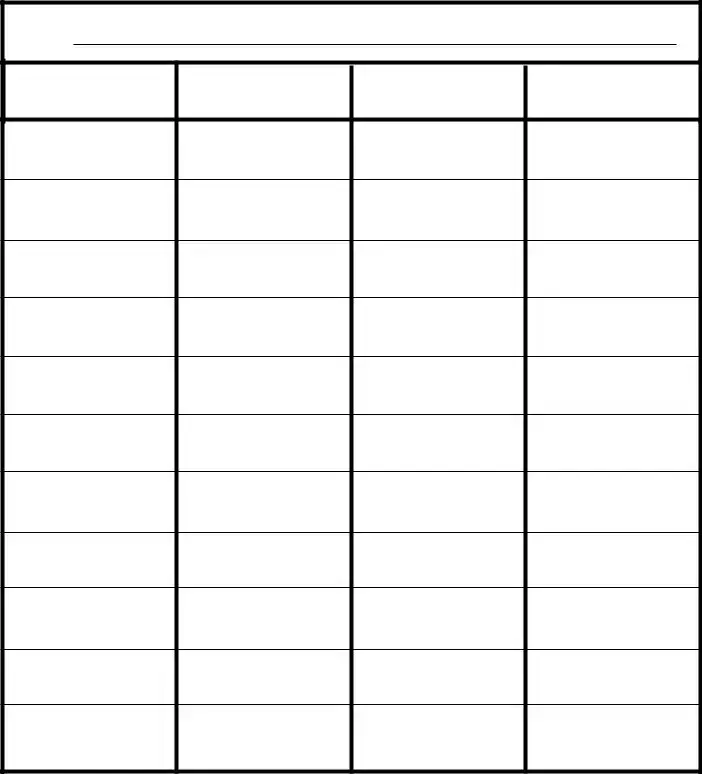Fill Out a Valid Four Column Chart Template
The Four Column Chart form is a structured tool designed to help individuals organize information clearly and effectively. By dividing information into four distinct columns, users can categorize and detail their thoughts or data on a specific topic. To begin utilizing this form, please fill out the required sections by clicking the button below.
Customize Document Online

